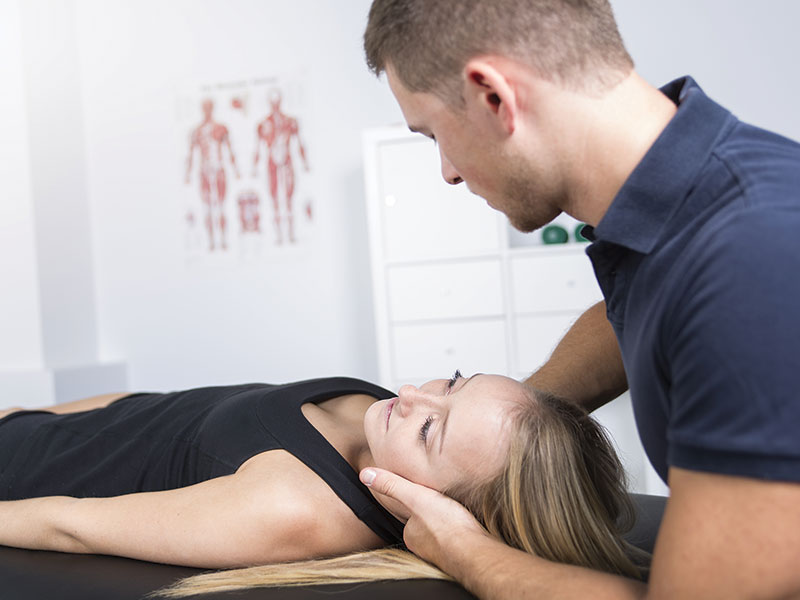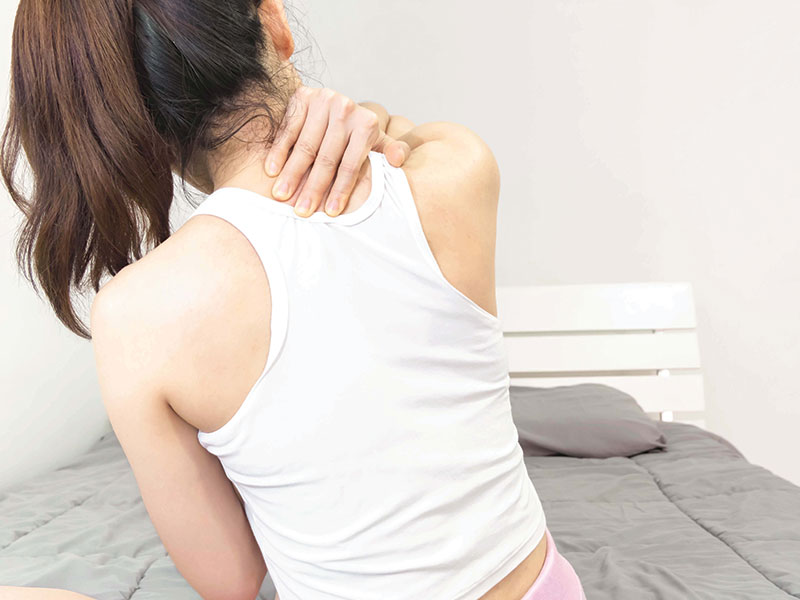Neck Pain
All of our Physiotherapists are specialists in assessing all aspects of the cervical spine structures and are experienced in all the special testing to diagnose your condition. We will advise you whether a cervical spine scan is also necessary.

The Neck (Cervical Spine) Roles and Functions
Housing and protecting the spinal cord. This bundle of nerves extends from the brain and runs through the cervical spine and thoracic spine prior to ending just before the lumbar spine (lower back), the spinal cord relays all the important messages from the brain to the rest of the body.
Supporting the head and its movement. The cervical spine carries the big load of the head weighing on average between 5 and 6 kilograms. In addition to its support role the cervical spine allows for the head’s flexibility, including rotational, flexion/extension and side to side bending motions.
Facilitating flow of blood to the brain. Vertebral openings (vertebral foramen) in the cervical spine provide a passageway for vertebral arteries to pass and ensure proper blood flow to the brain. These openings are present only in the vertebrae of the cervical spine.
The cervical vertebrae play a key role in maintaining these functions in the neck.
The Cervical spines key structures
- Vertebrae there are 7 bones that interconnect to form your neck
- Facet joints are the joints in your neck that interconnect your vertebrae and enable your neck to flex, lateral bend, extend and rotate.
- Intervertebral Discs are fibrocartilage discs that act as a spacer and provide shock absorption between each vertebrae
- Ligaments are fibrous bands that connect and provide support holding the bones together forming the facet joints. Ligaments are strong band that combine to keep the neck very stable.
- Spinal cord is a bundle of nerves that collectively connect from the brain extending down running through the cervical spine, thoracic spine and ends in the lumbar spine.
- Peripheral nerves are nerves that exit from the spine and are extensions from the spinal cord which innervate the body functions.


Common cervical spine injury and pain sources
Cervical degenerative disc disease refers to when a cervical disc is the source of pain, possible from twisting and falls involving the neck but more commonly from prolonged poor posture and wear and tear of the cervical spine. Symptoms of stiffness numbness, tingling and weakness in the neck, arms and shoulders.
Peripheral nerve impingement may occur when peripheral nerves are irritated or pinched by degenerative disc degeneration leading to severe pain from the neck extending into the shoulder and arms, weakness may also be present.
Bone spurs and cervical osteoarthritis A bone spur (osteophyte) is an enlargement of the facet joint which develops over time and are seen in adults over 60 years of age. Symptoms may include pain and weakness in the arms and legs accompanied with dull neck pain and headaches.
Facet joint hypo-mobility can be caused from multiple sources; locked facet joints, facet joint arthritis, degenerative facet joint osteophytes, joint capsule scarring thickening and shortening, and/ or protective muscle spasm. Symptoms include cervical stiffness and restricted movement, headaches and muscular aches.
Exercise Physiology, Clinical Pilates & Sports Physiotherapy in Sydney
ES Physiotherapy has holistic physiotherapy practices in Kingsford, Randwick & Bondi Junction with a focus on outstanding care, individualised treatment and injury prevention, so you recover quicker.

